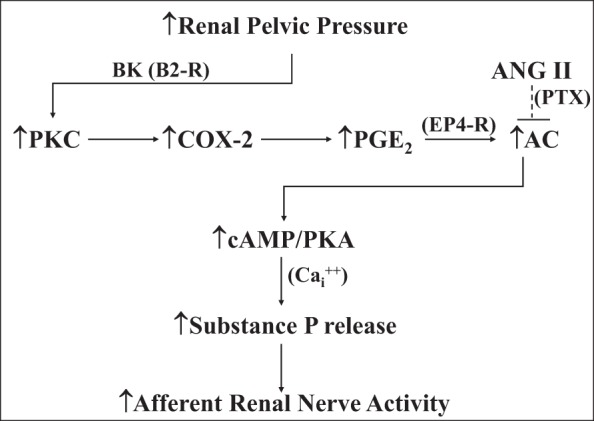Fig. 10.

Stretching the renal pelvic wall by increases in renal pelvic pressure leads to activation of PKC by stimulation of bradykinin (BK) B2 receptors (B2-R), which leads to induction of cyclooxygenase-2 (COX-2) and an increase in renal pelvic release of PGE2. PGE2 activates EP4 receptors on or close to the renal pelvic sensory nerves, which, in turn, leads to activation of the adenylyl cyclase (AC)/cAMP/PKA transduction pathway. This results in a calcium (Cai2+)-dependent release of substance P and increases in afferent renal nerve activity. The mechanisms involved in the suppressed responsiveness of the renal sensory nerves in physiological and pathophysiological conditions of increased endogenous ANGII activity, include ANG II reducing the PGE2-mediated activation of AC by a pertussis toxin-sensitive (PTX) mechanism. [Data derived from Refs. 65, 68, 70, 73, 76, 81–83].
